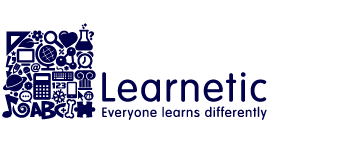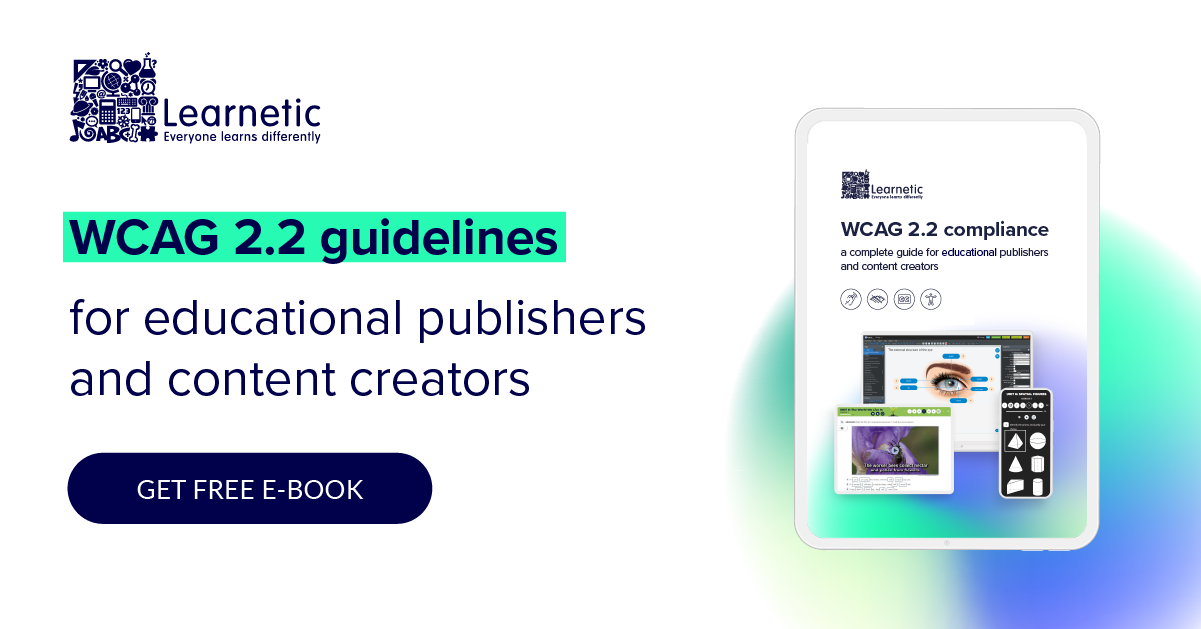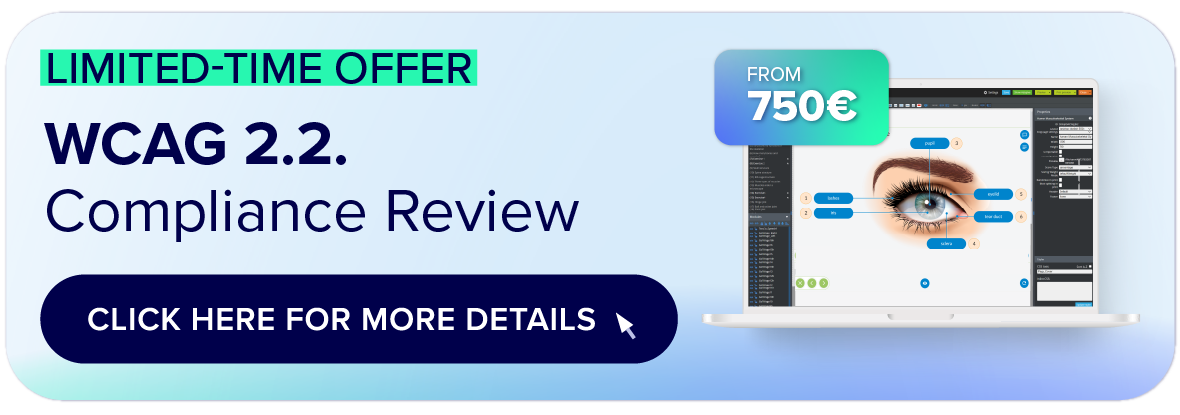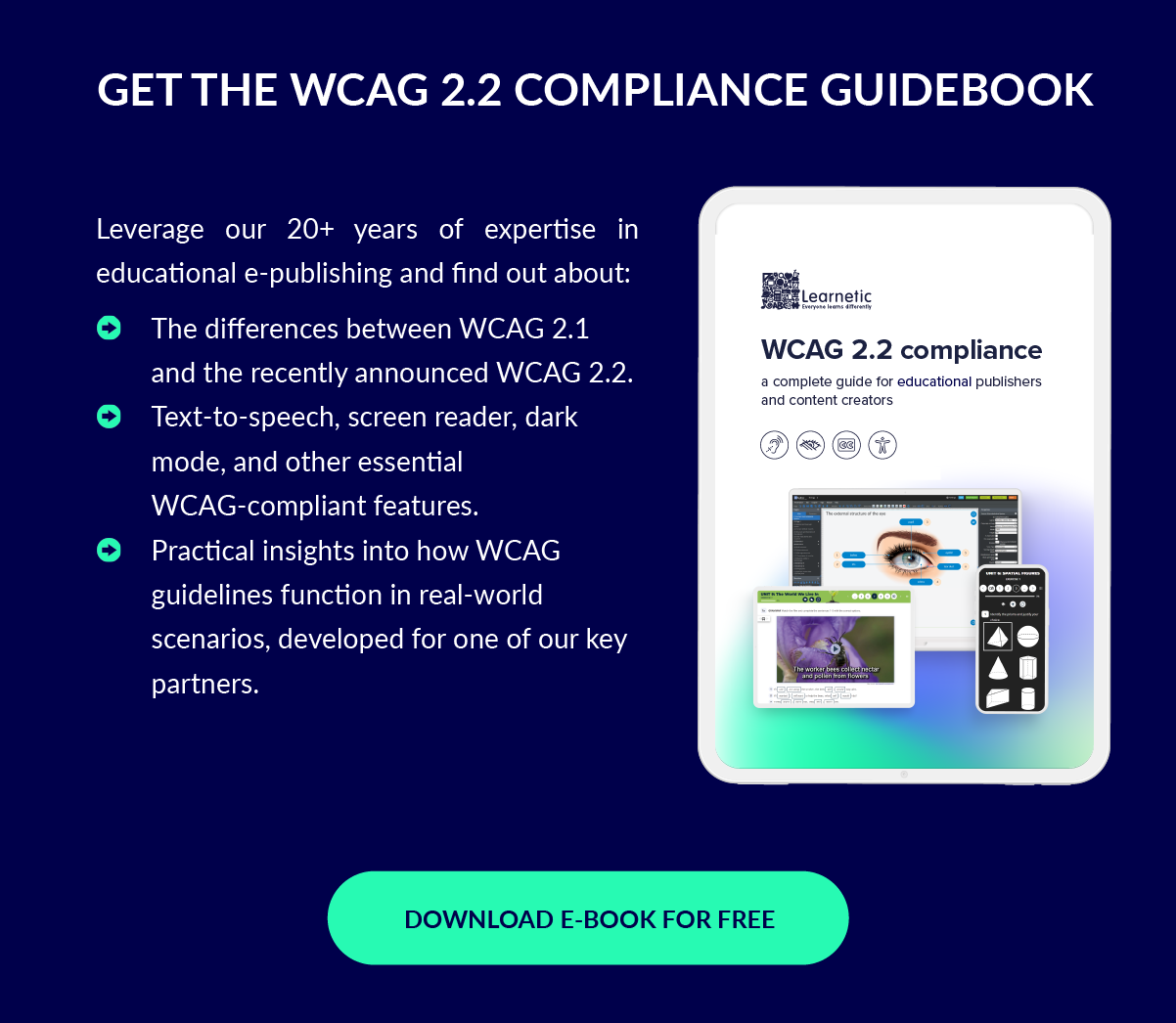WCAG 2.2 guidelines for educational publishers and content creators
June 28, 2025, is the deadline for all educational publishers in the European Union to ensure their educational digital content complies with WCAG 2.2. The middle of next year might seem like a distant future, however it doesn’t necessarily mean we can all relax. Digital accessibility is a quite complex and demanding area, and implementation of the latest set of WCAG standards might be truly time-consuming. Especially when we talk about large volumes of educational interactive content.
Furthermore, if you operate in the United Kingdom, the timeline is much tighter. The UK Government Digital Service (GDS) will begin monitoring eContent on public services for these new requirements in just 3 months (or less, depending on when you’re reading this), starting in October 2024.
While legally mandated for the public sector, these guidelines benefit all organizations. Implementing them enhances usability for everyone, leading to more inclusive digital experiences. Adoption of these standards by commercial organizations, especially educational publishers, will positively impact everyone involved in an educational journey. It can enhance students’ experience and engagement, broaden audience reach, and ensure compliance with broader accessibility standards.
We believe that understanding and implementing WCAG 2.2 guidelines is becoming imperative for educational publishers and content creators to ensure their digital educational content is accessible to all. Why wait for regulators to force the standards when you can be a leader of educational digital accessibility?
We invite you to read our in-depth blog post and discover how to effectively incorporate these essential accessibility features. Then, you may decide whether to contact our experts for a free consultation.
Understanding WCAG 2.2 Guidelines
WCAG 2.2 introduces several updates to enhance accessibility for users with cognitive and learning disabilities, visual impairments, and those who operate mobile devices. Key additions include:
- Focus Appearance and Visibility: Improved focus indicators to assist keyboard navigation.
- Input Modalities: Alternatives to dragging movements and larger interactive targets.
- Consistent Help and Accessible Authentication: Streamlined help options and easier login processes.
These updates build on WCAG 2.1, ensuring that educational content remains accessible as technology and user needs evolve.
The WCAG 2.2 draft provides 9 additional success criteria from WCAG 2.1. Of these, 7 are considered to have been complied with for all those who conformed to AA under the previous guidelines. In addition, one of the criteria (2.4.7) changed the accessibility level from AA to A. No Success Criteria have been removed in WCAG 2.2 – only added or updated. Currently, WCAG 2.1 contains 78 success criteria, and WCAG 2.2 contains 87.
Why Digital Accessibility Matters for Educational Publishers
Accessibility in digital education is not only about compliance; it’s about providing equal learning opportunities. Accessible materials can significantly improve the learning experience for students with disabilities, ensuring they have the same educational opportunities as their peers.
Key features of WCAG-compliant educational materials include:
- Alternative Submission Methods: Options for verbal and written answers.
- Accessible Design: Clear color contrast, logical content sequence, and alternative text for non-text content.
- Enhanced Audio and Video Content: Transcripts, closed captioning, and keyboard navigation for media content.
How to Achieve WCAG Compliance in Educational Materials
Implementing WCAG 2.2 guidelines can seem daunting, but with the right tools and strategies, it becomes manageable. Our e-book WCAG 2.2 Compliance: A Complete Guide for Educational Publishers provides detailed guidance on:
Key features of WCAG-compliant educational materials include:
- the differences between WCAG 2.1 and WCAG 2.2: What’s new for digital educational content creators,
- essential features WCAG-compliant educational materials should include,
- practical insights into how WCAG guidelines function in real-world scenarios,
- examples of WCAG-compliant interactive digital lessons.
Are you looking for a streamlined and customer-proven way of making your educational content accessible to all learners? We’ve got you covered. Download our free e-book, find out how to address key digital accessibility areas and decide whether you’d like to discuss it further with our experts. Visit Learnetic’s WCAG 2.2 Compliance Guidebook to get your free copy. For personalized advice and a free consultation, contact us today.
Are you looking for a streamlined and customer-proven way of making your educational content accessible to all learners? We’ve got you covered. Download our free e-book, find out how to address key digital accessibility areas and decide whether you’d like to discuss it further with our experts. Visit Learnetic’s WCAG 2.2 Compliance Guidebook to get your free copy. For personalized advice and a free consultation, contact us today.








